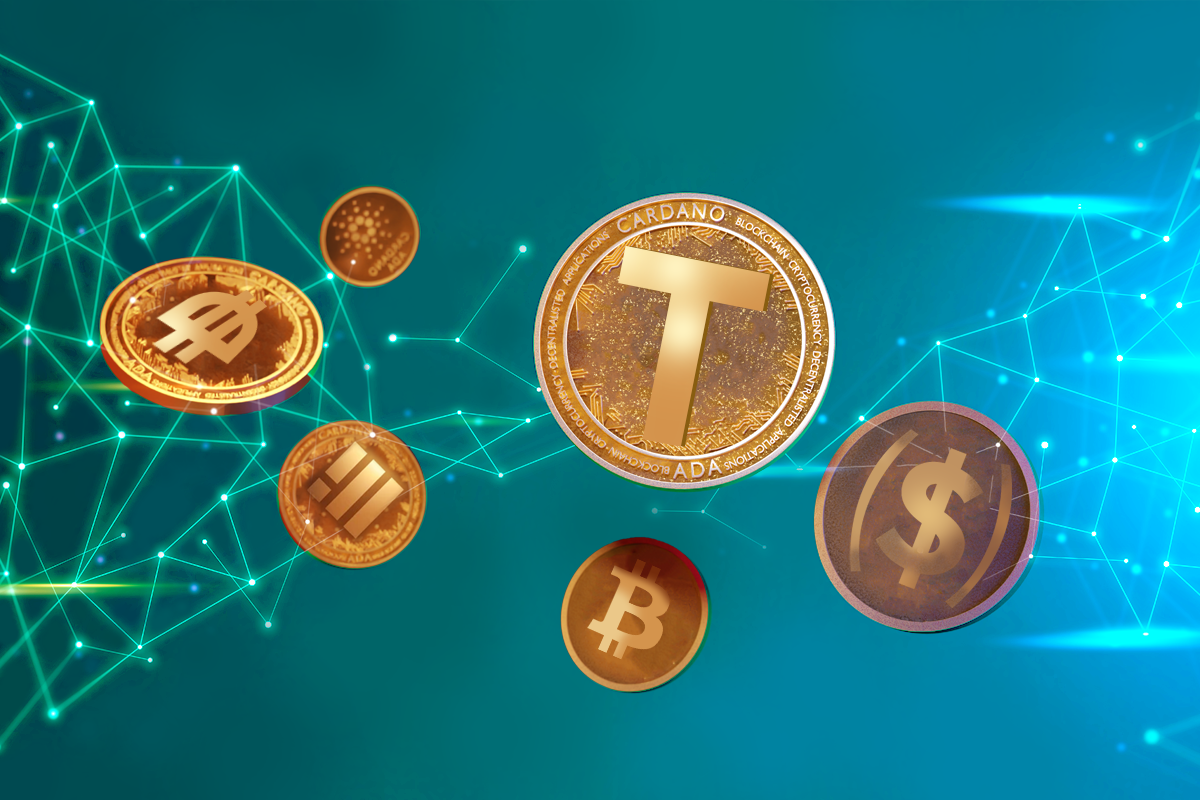Cryptocurrencies like Bitcoin and Ethereum have been making waves in the financial industry for some time now. However, one issue that has been a barrier to wider adoption is their volatility. The value of cryptocurrencies can fluctuate widely in a short period, making them unsuitable for many use cases. To address this, a new type of cryptocurrency was developed – stablecoins.
Types of Stablecoins
There are several types of stablecoins, each with its own mechanism for maintaining a stable value:
1. Fiat-backed stablecoins
Fiat-backed stablecoins are backed by fiat currencies like the US dollar, euro, or yen. For example, Tether (USDT) is a stablecoin that is pegged to the US dollar. The issuer of the stablecoin holds a corresponding amount of fiat currency in reserve, which can be redeemed for the stablecoin at any time. This means that the stablecoin’s value remains stable because it is always backed by the underlying fiat currency.
2. Crypto-backed stablecoins
Crypto-backed stablecoins are backed by other cryptocurrencies. For example, DAI is a stablecoin that is backed by Ethereum. The mechanism for maintaining the stable value of these stablecoins is more complex than fiat-backed stablecoins. The value of the underlying cryptocurrency can fluctuate, which means that the issuer of the stablecoin needs to ensure that the collateral is over-collateralized to protect against price fluctuations.
3. Algorithmic stablecoins
Algorithmic stablecoins use algorithms to adjust the supply of the token to maintain a stable value. For example, Basis (formerly known as Basecoin) was an algorithmic stablecoin that aimed to maintain a value of $1. The supply of the stablecoin would increase or decrease depending on the demand for the stablecoin.
Benefits of Stablecoins
Stablecoins have several benefits that make them attractive to users:
1. Stability
Stablecoins offer stability, making them suitable for use as a store of value or as a medium of exchange. This stability means that they can be used for payments without the risk of losing value due to price fluctuations.
2. Fast and borderless transactions
Stablecoins can be sent anywhere in the world instantly and at low cost, just like other cryptocurrencies. This makes them ideal for cross-border payments, which can often be expensive and slow using traditional payment methods.
3. Transparency
Many stablecoins are fully transparent, with their reserves audited regularly to ensure that they are fully backed. This transparency provides users with confidence that the stablecoin is indeed stable and that they are not at risk of losing their funds.
Uses of Stablecoins

Stablecoins have a wide range of use cases, including:
1. Trading
Many cryptocurrency traders use stablecoins as a way to park their funds during periods of high volatility. By converting their cryptocurrencies into stablecoins, they can avoid the risk of losing value due to price fluctuations.
2. Remittances
Stablecoins can be used to send money across borders quickly and cheaply, without the need for intermediaries. This can be particularly useful for people who do not have access to traditional banking services.
3. Decentralized finance (DeFi)
Stablecoins are a crucial component of many DeFi protocols, providing liquidity and stability to the ecosystem. For example, stablecoins can be used to provide collateral for loans or to provide liquidity for decentralized exchanges.
Conclusion
Stablecoins offer a stable and reliable way to transfer value without the volatility associated with cryptocurrencies like Bitcoin and Ethereum. They have a wide range of use cases, from trading to remittances and DeFi. As the cryptocurrency industry continues to evolve, stablecoins are likely to play an increasingly important role.
Stablecoins provide a bridge between the traditional financial system and the world of cryptocurrencies. They offer the benefits of cryptocurrencies, such as fast and borderless transactions, without the volatility that has been a barrier to wider adoption. This makes them attractive to a wide range of users, from cryptocurrency traders to people who want to send money across borders quickly and cheaply.
The market for stablecoins has grown rapidly in recent years, with many new stablecoins being launched. However, there are concerns about the regulation of stablecoins, particularly those that are not fully backed by fiat currencies. Regulators are also concerned about the potential for stablecoins to be used for money laundering or other illicit activities.
Despite these concerns, the future of stablecoins looks bright. They offer a stable and reliable way to transfer value that is fast, borderless, and low-cost. As the cryptocurrency industry continues to evolve, stablecoins are likely to become an increasingly important part of the ecosystem.
FAQs
What is the purpose of Stablecoins?
Stablecoins aim to provide an alternative to the high volatility of popular cryptocurrencies, including Bitcoin (BTC), which can make cryptocurrency less suitable for common transactions.
How does Stablecoins work?
Stablecoins attempt to peg their market value to some external reference, usually a fiat currency. They are more useful than more-volatile cryptocurrencies as a medium of exchange. Stablecoins may be pegged to a currency like the U.S. dollar or to the price of a commodity such as gold or use an algorithm to control supply. They also maintain reserve assets as collateral or through algorithmic formulas that are supposed to control supply.
Are Stablecoins safe?
Stablecoins combine benefits of traditional currency and cryptocurrencies, but their safety depends on backing, issuer, and regulations. Stablecoins backed 100% by safe external assets are considered the safest, with USD-backed stablecoins being popular.
What are the most popular Stablecoins?
The top 5 stablecoins in 2023 may vary depending on market conditions, but some of the most popular ones currently include Tether (USDT), USD Coin (USDC), Binance USD (BUSD), Dai (DAI), and TrueUSD (TUSD). Tether (USDT) is the most widely used stablecoin and is pegged to the U.S. dollar.








